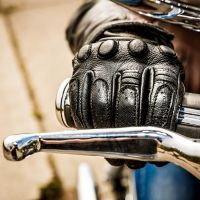
Rubenstein’s Road Trip Rules
South Florida drivers will be hitting the highway in the coming weeks. July and August are some of the busiest months for vacation road trips. Whether you’re trying to escape the South Florida heat (good luck!) or you’re off to explore, safety is paramount. Even the safest drivers sometimes encounter emergency driving situations. Knowing what to do and how to handle your car can mean the difference between a close call and a serious accident.
Here are a few common emergencies and how to respond:
Tire Failure
- Brake gently.
- Concentrate on steering straight ahead.
- When the car is completely under control, pull off the roadway.
Driving on a flat tire causes damage to the side walls, tread and rim. In general, you have about one mile of driving on a flat tire before you cause serious damage to the wheel.
Jammed Accelerator
- Keep your eyes on the road.
- Slap the accelerator pedal hard with your foot.
- Shift into neutral. While this may cause damage to your engine (over revving), it is certainly better than a high speed crash.
- Brake to stop.
Brake Failure
- Pump the brake pedal rapidly and hard several times. This will often build up enough brake pressure to stop the car.
- Shift into low gear and look for a place to slow to a stop.
- Try the parking brake. If it is working, hold the brake release handle so you can let off on the brake if the rear wheels lock and you begin to skid.
Engine Fire
- Pull off the roadway and stop the car as soon as safely possible.
- Turn off the engine.
- Get out of and away from the car.
Hydroplaning
Driving too fast on wet roadways where the water is deeper than the tread on your tires causes “hydroplaning.” Your car actually loses contact with the pavement and rides on layers of water, much like a water ski. Roads are most slick at the beginning of a rainfall when road dust and oil mix with water. If you encounter a heavy rain while driving:
- Reduce speed and allow more space between you and the car in front of you.
- Turn on low beams to help others see you.
- If you start to hydroplane, take your foot off the accelerator and wait until your tires regain traction with the pavement. Do not brake until you regain control or you may go into a skid.
I have many fond memories of road trips with my own family during the summertime. There is so much to see around Florida and the rest of the country. I hope you never have to use any of this emergency driving advice.
Stay safe!




